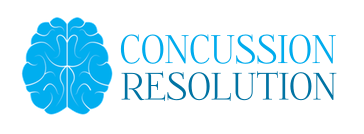Do you hide your symptoms?
NCAA Medical Chief on Concussions: ‘There’s a Sense of Urgency’
http://chronicle.com/blogs/players/ncaas-medical-chief-on-concussions-theres-a-sense-of-urgency/33301
Have you seen the above article yet? It’s a common theme among most collision sports and at all ages and stages. Even as I watch my son playing rugby I observe how head injuries/hits etc are handled. It’s astounding to me! That being said, I am not an athlete. It’s not my job, or my scholarship on the line. I am not in charge of taking the team to the play offs. It’s not me that has adrenaline pumping through my veins, eager to play. It’s easy to stand back and say ” Report your symptoms”. I’m the therapist, of course I want the symptoms reported! I don’t expect that reporting concussion symptoms is going to change overnight. How many people report nagging back pain or a tweaky knee? Usually not until it’s at it’s worse and I don’t anticipate that athletes and non athletes alike are going to feel much different about head injuries. My players come to see me when their shoulders are already at their worst. When they already have a groin injury. Trying to get them in for any kind of preventative ANYTHING is like pulling teeth. I’m a mom, so I nag and I pull the mom card on my guys. Sometimes it works, sometimes it doesn’t. It’s the same thing with concussions in my experience. Some come immediately, some wait and see. My concern is always about hiding the symptoms and playing injured but I don’t expect to change anyone’s mindset anytime soon. My only hope is that if I can get any of them to be willing enough to see me within 48hrs and be willing enough to sit out 1 week – I feel like I have done my job. I know I can make them feel better but I am the middle (wo)man. It’s not only the athlete who needs to learn when to step back, but the trainers, coaches, parents, etc. that also need to know when to take a step back. What I have learned is that it’s all about trust. What is the long term gain for sending a player back in too early? Win that game? Maybe. But if they aren’t playing 100% anyway, why send them in? If the player is holding back from playing at their fullest potential, who is really winning? Keep them out and keep them healthy and you have got a strong player for MANY games.
Symptoms you can’t see or test for (and therefore can HIDE):
vision issues (subjective symptoms – dots, sparkles, tunnel vision, sensitivity to light, etc)
nausea
headaches
fatigue
neck pain
ringing in the ears
feeling generally crappy (my chronic PCS clients often say this)
pin pointed throb in the head
feeling as though your brain doesn’t fit your skull (inter-cranial pressure)
sleep issues
irritability
depression
There are more, but you get the picture.
On July 22, 2013 The Canadian Medical Association Journal released a new report to substantiate all physical and mental rest post concussion. After that time you need to follow a certain schedule of activity. Once you complete the first level with no recurring symptoms, you move on to the next. Do you know the stages? If not, here they are:
•No activity: complete rest
•Light exercise: walking, swimming, stationary cycling
•Sport-specific exercise but no head-impact sports
•More vigorous but non contact training drills
•Full-contact practice: normal activities after medical clearance
•Return to full game play including contact
When you see a qualified Bowen Therapist who is experienced with treating concussions as soon as you can post injury and implement a treatment plan along with rest and wait model of recovery you will be back in the game before you know it. Be sure to have your RTP status medically cleared by a qualified professional in your state or province.
Have a great holiday weekend!
Jenna
